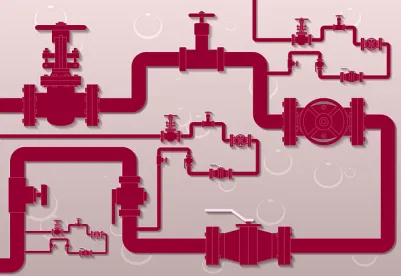Welcome to the second issue of Foley’s Energy MarketTrends newsletter, which continues to highlight 2019 economic, legal, and business forces impacting traditional and renewable energy producers, distributors, investors, and resellers.
Current Trends
The domestic oil and gas industry is at an unusual confluence of events. For nimble operators and investors, this presents unique opportunities, and for the overleveraged or slow, it represents danger. The U.S. economy is experiencing a boom: manufacturing jobs are on the rise, as are employment and labor participation rates, and the Dow has just set another all-time high. All of these factors point to increased energy usage, and indeed, that has been the case. Under these circumstances, it would be reasonable to expect the price of oil and gas, and the value of the companies that produce them and service the producers, to be moving up smartly. Yet prices have been dropping, as have the stock prices of producers. Following suit, oilfield services companies, generally more thinly capitalized and more labor intensive, have suffered even more than the producers.
What accounts for these seemingly anomalous circumstances? The answer has very little to do with renewable forms of energy, but quite a lot to do with supply and demand. Simply put, the country, as well as the world, is awash in oil and, in the U.S. at least, so much natural gas is being produced that we do not have sufficient pipelines of storage to accommodate it.
First, let’s acknowledge that oil trades in a worldwide market. Excess production in any part of the globe can find a market in another part. The effect on the domestic market is that the flush worldwide production takes away some foreign outlets for any oversupply of crude oil. The problem with natural gas is similar, but slightly different. There too, excess capacity abounds, but the still-building infrastructure makes gas more difficult to sell internationally. The effect is domestic production equal to or greater than we can use. True enough, the U.S. still imports some oil, but that has more to do with regulatory and infrastructure issues than capacity.
Looking at U.S. production of oil and gas over what one commentator has referred to as the “new modern era” (roughly since the crash of late 2014) explains a lot. Much has been written about the shale revolution, which started in earnest 10 or 12 years ago, and in mid-2014, increasing production, a robust global economy, and the spectacular implosion of a significant commodity trading firm caused the price bubble to start deflating and to burst not long after. The resulting period is what we refer to as the “new modern era."
At its recent peak in July 2014, U.S. crude oil traded at $107/bbl for the month ahead future contract (spot prices were about the same). At that time, natural gas prices were hovering slightly above $4/mcf. The U.S. rig count, then at 1,861 rigs, continued marching upwards towards its high of 1,930 rigs a few months later. In September 2014, the U.S. was producing 8.8 million barrels of oil per day, and roughly 2.2 billion cubic feet of gas per day.
Today, the U.S. rig count has declined to 961 rigs; oil is selling for $57.62/bbl and natural gas is at $2.30/mcf. Yet oil production has increased to 12.2 million bpd and gas production has increased to 2.7 billion mcf/day.
How did that happen, and what comes next? Science, technology, and experience were harnessed to allow producers to do more with less, meaning that fewer rigs, employees and companies were required. Many investors had rushed to the market, and companies took on debt, when prices were on the uptick, while other investors have grown tired of funding oil companies’ growth at the expense of dividends. These events have resulted in what is now the third wave of restructurings in the “new modern era.”
Opportunities abound for attractively priced acquisitions and financing alternatives. While stock prices have suffered, so too have bond prices. Many distressed debt funds have snapped up large positions in these notes and bonds, with a view toward converting them to equity in an out-of-court or court-assisted restructuring, thus taking advantage of what they believe is a built-in upside.
Drilling companies look to new methods of financing their activities and spreading risk through methods that are lately back in fashion such as production payments, “drillcos,” and other mechanisms or structures that bring in fresh capital, but which, unlike debt, spread operational risk to the counterparties.
And as should be apparent, consolidation is the word of the day. The reduction in service companies through mergers, acquisitions, or liquidations is likely permanent. Consolidation of the exploration and production companies is more opportunistic, with the better capitalized, more careful and more efficient companies able to take advantage of competitors that are less so. Finally, domestic transportation companies, primarily pipelines, remain interesting—more volume means more need, but at lower prices. In this sector, too, consolidation has started and will likely continue.
Thus, as the market moves to separate the quick from the dead, the nimble operators and investors should profit handsomely.
Market Intelligence
Qualifying Solar Projects for Renewable Energy Investment Tax Credits
Solar developers that wish to maximize the federal tax incentives associated with their projects are looking beyond 2019 and planning for the phasedown of the Section 48 solar investment tax credit. By being proactive, these developers are grandfathering 2020-2023 projects at the current 30% credit level. This benefits both the developer and any tax credit investors participating in the financing of the project.
The Solar ITC – Qualifying for Tax Benefits at 2019 Levels
Section 48(a) of the tax code provides an investment tax credit (ITC) for solar energy property. The credit typically is based on a percentage of the cost of the property, depending on the date construction on the project begins:
|
If construction begins: |
And is completed before: |
The ITC percentage is: |
|
Before 2020 |
2024 |
30% |
|
During 2020 |
2024 |
26% |
|
During 2021 |
2024 |
23% |
|
After 2021 |
No end date |
10% |
The tax code does not provide guidance on what it means to “begin construction” for Section 48 purposes. However, in 2018, the IRS released administrative guidance in the form of Notice 2018-59. The notice provides two methods for taxpayers to establish when construction begins for solar energy property. The taxpayer can either (1) commence “physical work of a significant nature” (the physical work test), or (2) pay or incur at least five percent of the total cost of the eligible basis of the property (the 5% safe harbor).
Leading solar developers are using the physical work test and the 5% safe harbor to qualify projects for the 30% ITC by beginning construction in 2019 in a manner that satisfies the notice requirements, notwithstanding that such projects may not be placed into service until as late at 2023.
Physical Work Test
As provided in the notice, construction of the project begins when physical work of a significant nature begins. The IRS focuses on the nature of the work performed, not the amount or the cost. There is no fixed minimum amount of work or monetary percentage threshold required under the physical work test.
Physical work of a significant nature includes on-site work, such as the installation of racking, as well as off-site work, including the manufacturing of custom components, such as transformers, switchgear, and other custom power conditioning equipment. Preconstruction and other preliminary activities—like planning or designing, clearing the site, or obtaining permits—will not be considered physical work for purposes of the physical work test. Further, physical work does not include the manufacture of components that are either in existing inventory or are normally held in inventory by a vendor.
Once the taxpayer commences physical work on the project, the notice requires that the taxpayer maintain a continuous program of construction until completion of the project. However, the notice also includes a helpful safe harbor that essentially negates this requirement for solar projects.
5% Safe Harbor
As a separate means to establish beginning of construction, the 5% safe harbor is satisfied in the year in which the taxpayer “pays or incurs” five percent or more of the total cost of the solar energy property. This includes all costs included in the depreciable basis of the solar energy property, including any appropriate development fees allocable to ITC-eligible property. It does not include any costs associated with land or for equipment or property that is not considered integral to the solar energy property. Unlike the physical work test, the 5% safe harbor may be satisfied by purchasing equipment that is held in inventory.
Strategies
Developers may choose either the physical work test or the 5% safe harbor, depending on their anticipated pipeline and specific project characteristics within that pipeline.
In the case of the physical work test, either on-site or off-site will be performed, depending on whether the developer has site control. For on-site physical work, developers typically will start construction of maintenance roads or the installation of piles. In the case of off-site work, developers typically commence work on custom-designed transformers.
For the 5% safe harbor, developers typically purchase PV modules in bulk and then allocate them to projects in sufficient amounts such that they represent at least five percent of the ITC-eligible basis of the projects into which they are incorporated. However, there is no reason that PV modules should be considered the only type of equipment available to satisfy the 5% safe harbor. For example, racking components may be purchased in bulk. That said, the purchased materials should be manufactured or assembled items; it is unlikely that a 5% safe harbor strategy focused on raw material purchases will be accepted by the IRS or a tax equity investor.
Legal Update
Lloyd’s Syndicate 457, et al v. FloaTec, L.L.C., 921 F. 3d 508 (5th Cir. 2019) The Fifth Circuit affirmed dismissal of Lloyd’s claims arising out of its payment of $500 million in insurance proceeds to its insured, Chevron, related to FloaTec’s alleged breach of its engineering services agreement with the company in connection with the construction of its Big Foot platform in the Gulf of Mexico. FloaTec argued that it qualified as an “Other Assured” under the Chevron policy and that there was a waiver of subrogation in the policy against “Other Assureds.” Lloyd’s asserted that the dispute over whether subrogation was waived should be determined by arbitration under the terms of the Chevron/FloaTec contract and that, in any event, FloaTec was not an “Other Assured” under the policy. The Southern District of Texas dismissed the claims against FloaTec (and the Fifth Circuit affirmed), finding that there was no agreement to arbitrate between FloaTec and Lloyd’s and thus, that the dispute should properly be determined by the court. It also found that FloaTec was an “Other Assured” under the policy, allowing it to avoid any subrogation claim by Lloyd’s. This case serves as a good reminder that courts may make the important determination as to the existence of an agreement to arbitrate between the parties.
Bombardier v. SPEP Aircraft Holdings, 572 S.W.3d 213 (Tex. 2019) The Texas Supreme Court once again pronounced that Texas’ public policy allows parties to be masters of their own contracts and are, therefore, free to contract as they wish. Here, the court upheld a standard punitive damages exclusion clause in an airplane purchase contract, even though the jury found that the seller committed fraud in the underlying transaction. The takeaway: limitation of liability clauses are generally valid and enforceable.





 />i
/>i
